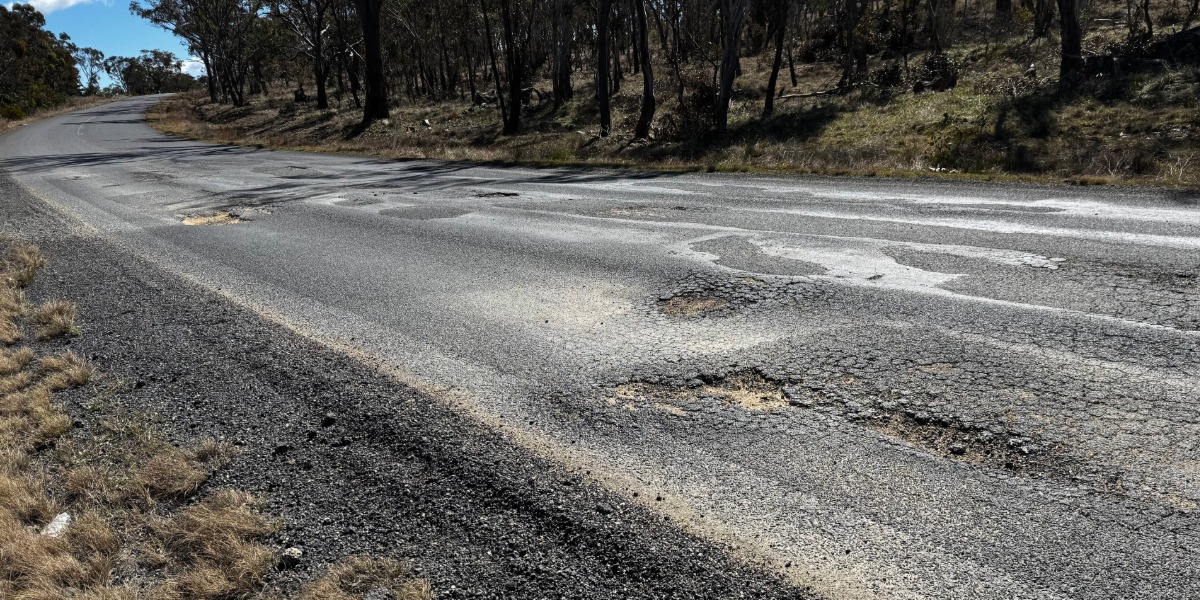Recent floods and storms have torn up much of the New England’s road network, leaving local councils scrambling to make emergency repairs while grappling with years of accumulated neglect.
At the same time, a new map of safety star ratings released by the NSW Government show that large sections of the region’s roads were already considered not safe even before the weather disasters. And the disaster funding available only allows for like-for-like replacement, returning roads to their previous ‘not safe’ condition rather than lifting them to a safer standard.
With large parts of the New England road network rated one or two stars, councils unable to fund repairs, and communities frustrated by long delays and “groundhog day” flood damage, there is a growing sense that regional NSW needs a fundamental rethink of how roads are funded and managed.
Star ratings don’t match the lived reality
An interactive map released recently by the NSW Government shows AusRAP safety star ratings for more than 35,000 kilometres of state and regional roads. The Minister for Roads, Jenny Aitchinson, said the initiative was about being “fair dinkum with the people of NSW” about road safety, and the NSW Government’s goal is to get all state and regional roads to at least 3 stars.
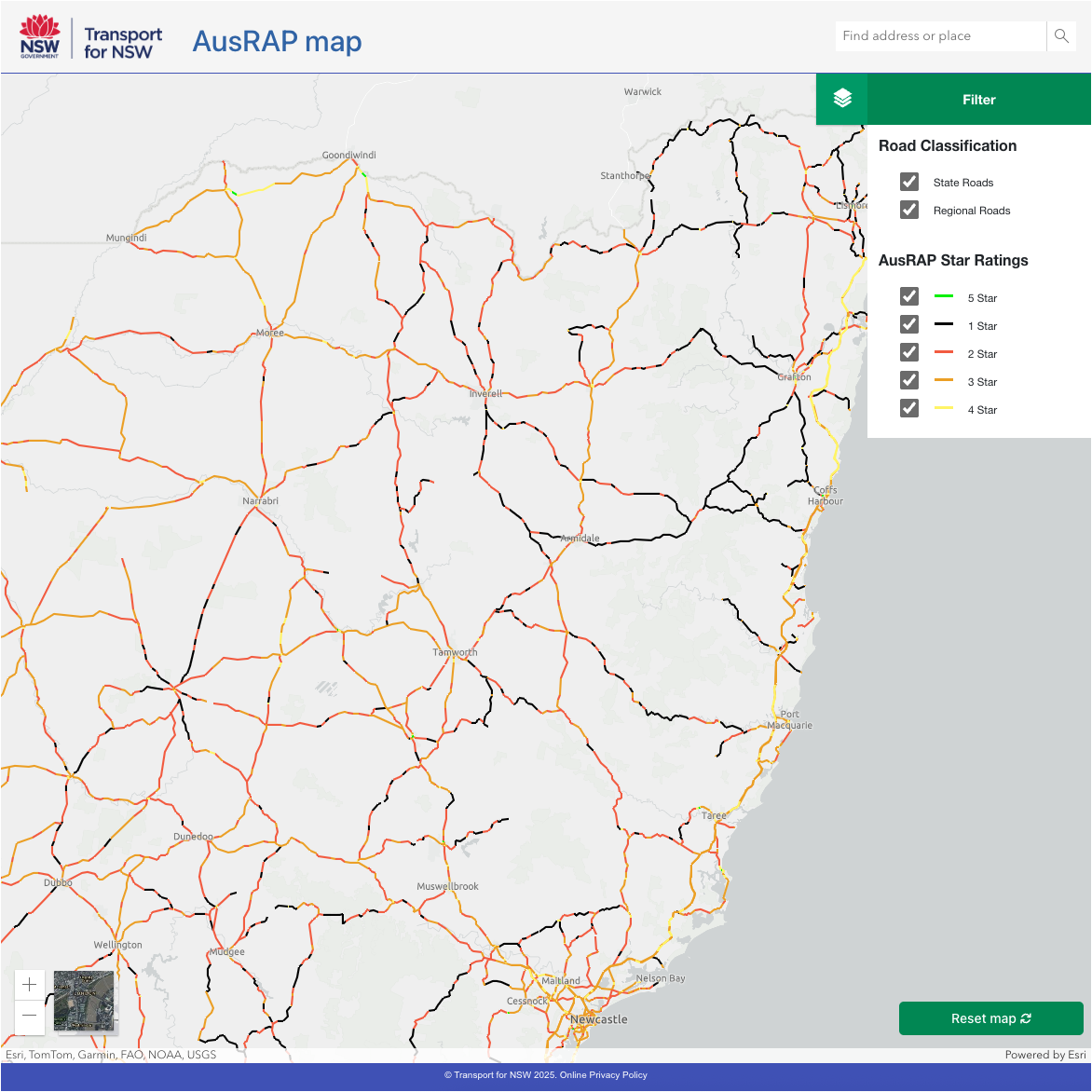
“We’re using this information to take a serious look at our road network and then leverage the data to deliver evidence-based upgrades and safety improvements.”
“You can’t fix what you don’t measure,” she said.
While over 71 per cent of travel in the state is on roads rated 3 stars or above, only half of the regional roads when measured by distance are up to that standard. The New England and surrounding regions appear to have a high proportion of 1 star roads, with all links to the coast being overwhelmingly 1 star rated.
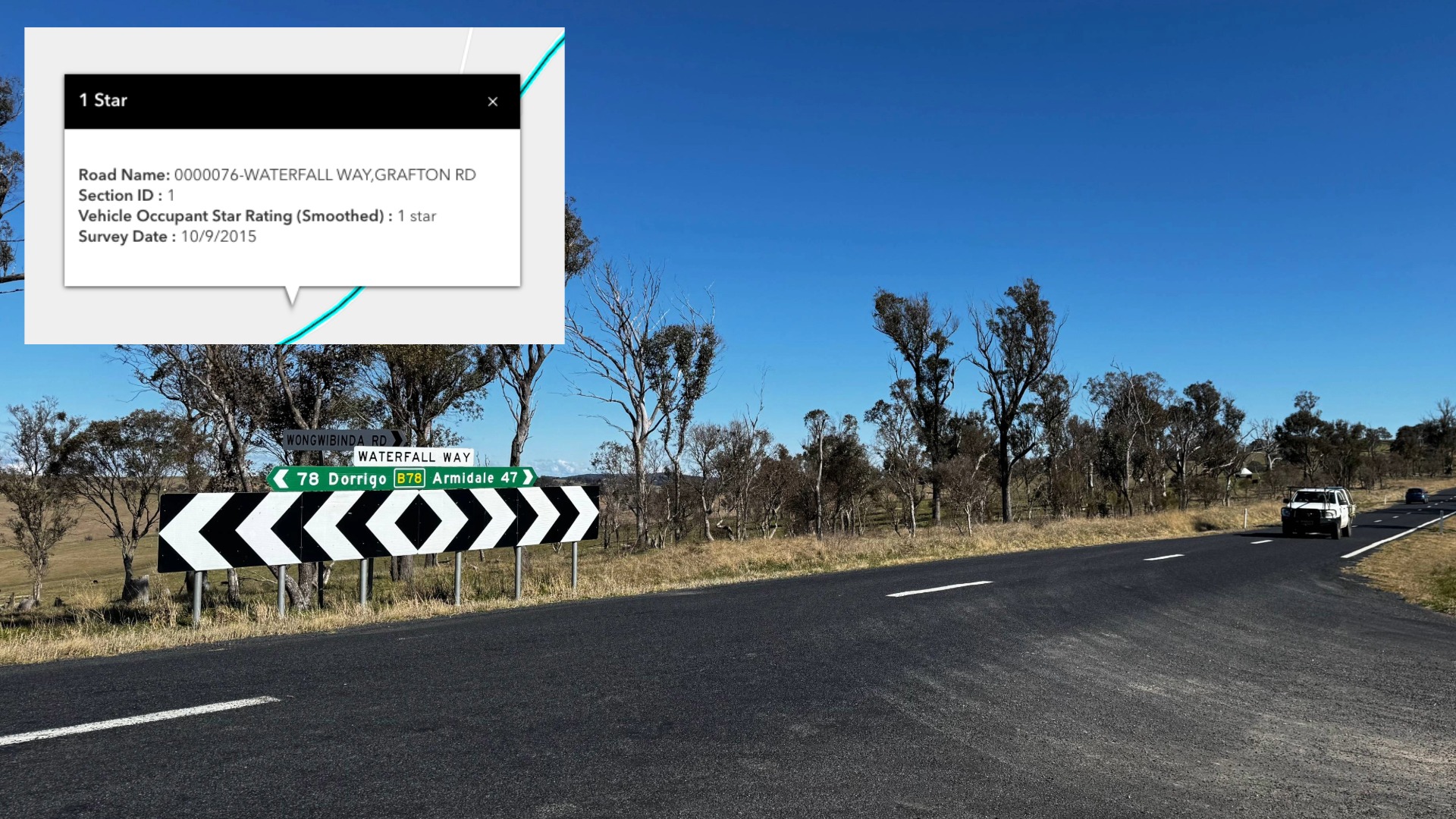
However, some major roads in the New England, including the busy Waterfall Way and Manilla Road, have not been assessed in a decade. Other roads appear to have been rated in a way that locals may not expect, such as around the intersection of Bundarra Road and Thunderbolts Way, given a two star rating despite being notoriously dangerous, while other roads which are much better to drive have a one star rating.
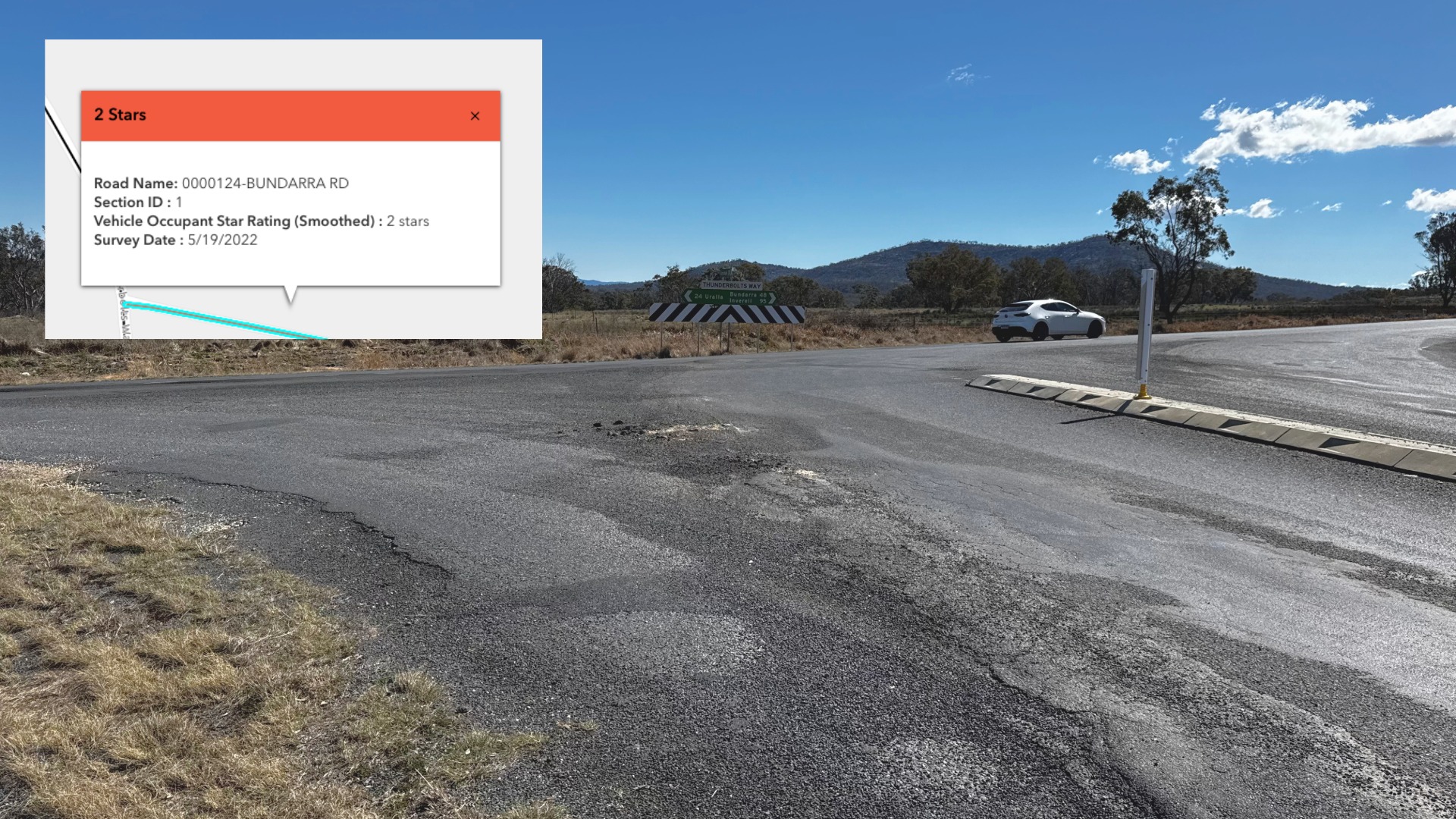
This inconsistency with reality is because the star ratings do not measure road surface quality. They only assess design features like lane width, shoulders, barriers, and roadside hazards – road surface condition is excluded as it is considered a ‘maintenance’ issue.
A former roads worker, James Davison, said this disconnect highlights a long-running problem with funding for building and maintaining regional roads.
“For decades these roads have been underfunded, the materials used got cheaper and the maintenance less frequent,” Mr Davison said.

“Now most of the roads in this region are fundamentally unsafe, and when you try and explain that to someone in the city they just don’t get it and think we’re complaining about potholes. It is beyond their comprehension that our road surface is not safe,” he said.
“Most of the smaller roads now are so bad it is not a maintenance job – particularly the roads between towns that have a bit of traffic. They can’t be patched any more, they need to be rebuilt.”

Mr Davison, who first reached out to the New England Times after the recent disintegration of the New England Highway under the weight of diverted traffic from the Pacific Motorway, said that should have been a wake-up call.
“When a major national highway just completely falls apart like that, that should have been enough to prompt a major response from both state and federal governments – like a smack in the face that our most critical, essential infrastructure is in really bad shape and they need to do something,” he said.
“Instead, months later, the highway still isn’t fully repaired, and all of those cracks and potholes keep getting worse. And that’s a National Highway. So something like Thunderbolts Way can take a number.”
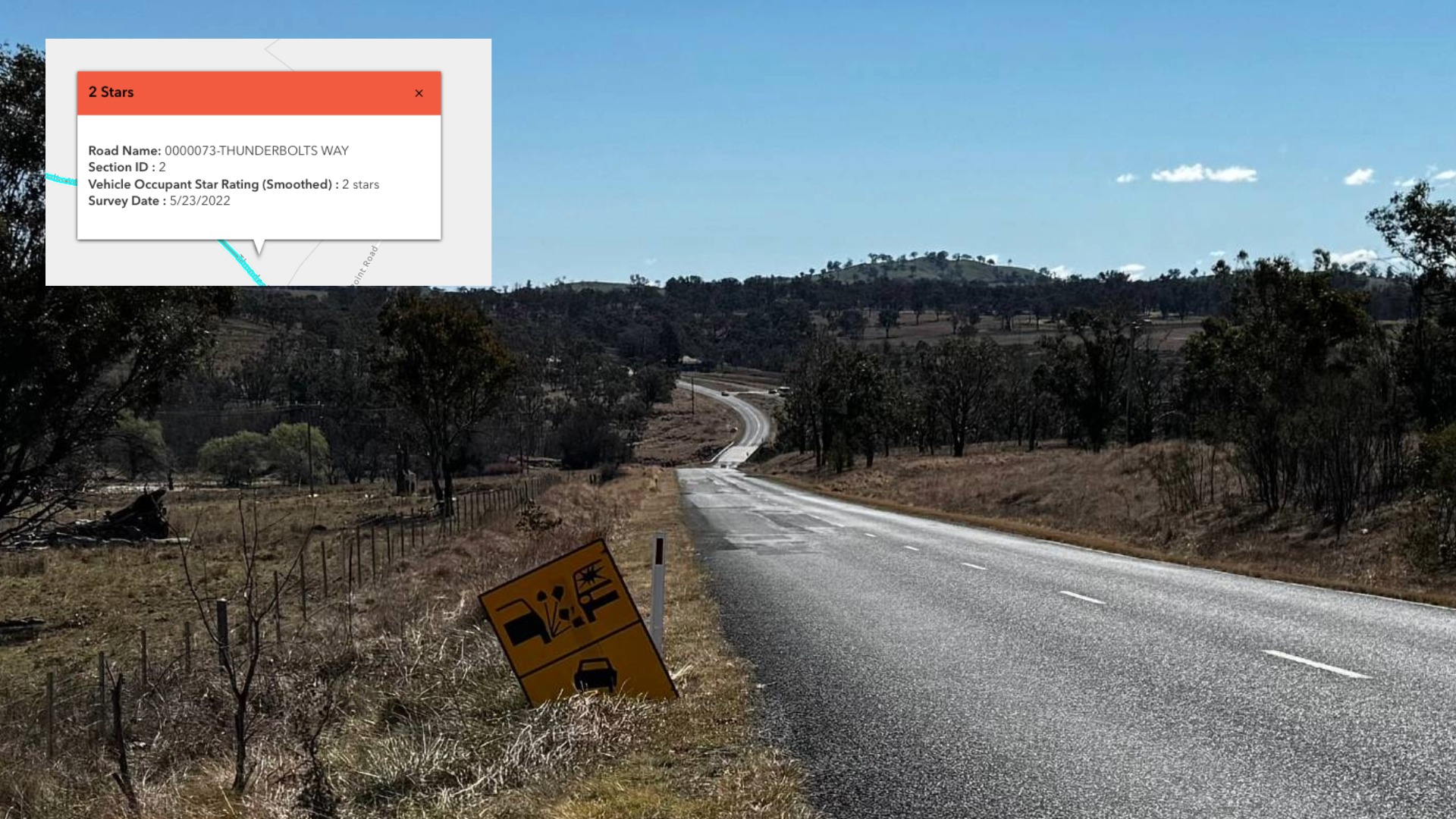
Transport for NSW defended the AusRAP system as a useful tool for identifying where safety infrastructure upgrades deliver the biggest reductions in trauma.
“Star ratings rely on detailed road survey data collection and are based on physical inspections of road design features — like lane width, barriers, intersection type and roadside hazards,” a Transport for NSW spokesperson said.
AusRAP star ratings for road safety
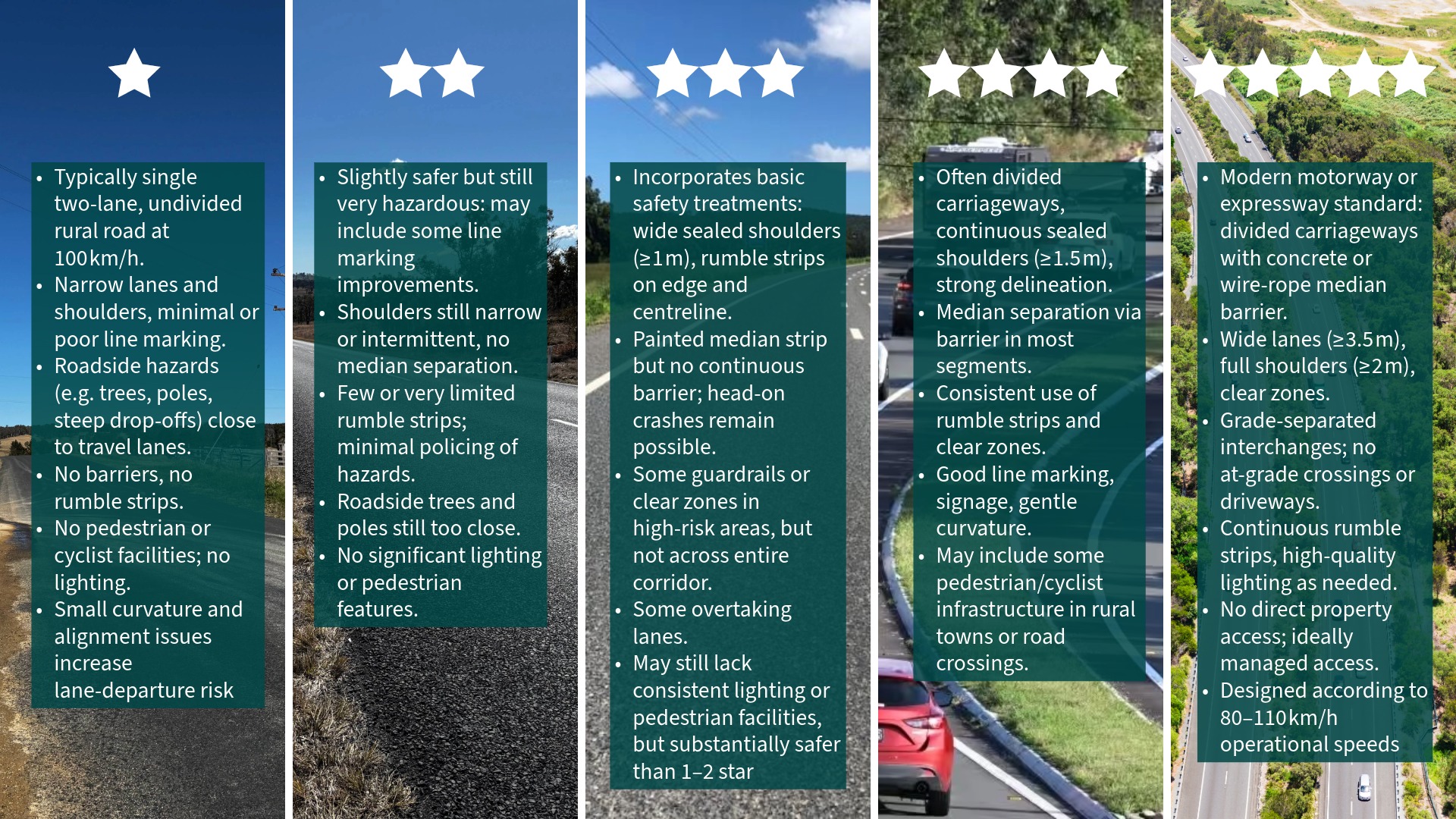
“Natural disasters such as floods and bushfires can significantly impact both the physical condition of roads and the timing of data collection activities.
“In some cases, roads may be damaged or become inaccessible for periods of time, requiring emergency asset inspections and urgent repair works to take precedence over scheduled AusRAP surveys,” the spokesperson said.
They assured that the star ratings is just of of a number of tools used in determining roads funding.
Councils warn of ‘alarming’ road damage
For councils in our region, the star ratings only confirm what they already know.
Moree Plains Shire Councillor Peter Mailler, who chairs the council’s Road Network Advisory Committee, said much of the network is already at the lowest possible safety level.
“Nearly every unsealed and quite a few sealed roads in our shire have segments that would be a one star rating, so if you assume the chain is only as long as its weakest link, most of our roads should hold a one star rating,” Cr Mailler said.
“Moree Plains Shire is basically a flood plain and we expect flood damages, but our roads are suffering from decades of underinvestment and now successive unmitigated extreme weather events.
“As a result, road damage is now compounding at an alarming rate. I can’t speak for all shires, but I am pretty sure Moree Plains Shire is not unique in this regard,” he said.
Glen Innes Severn Mayor Margot Davis agreed with the need for ‘betterment’ – an approach to disaster management where damaged assets are built back better, making them more resilient to future natural disasters, rather than to the standard before the disaster
“While much of our local network remains in reasonable condition, state highways have rapidly deteriorated following recent floods and snowstorms, highlighting the urgent need for betterment funding.
“Governments must commit to building resilience and future-proofing our roads against the increasing challenges posed by natural disasters and the evolving needs of our regional economy,” she said.
The issue was also recently highlighted by Federal Member for Parkes Jamie Chaffey, who said councils such as Gunnedah and Narrabri are still waiting for funding approvals for flood repairs dating back more than three years.
“Added to this is the NSW Government’s policy of funding only like-for-like repairs to roads. This means roads can only be repaired to the standard they were before flooding.”
“It doesn’t provide for flood-proofing and it means that every flood is groundhog day for councils and community,” Mr Chaffey said .
Gunnedah Shire Mayor Colleen Fuller said decisions and policies of the State Government were preventing council from building better roads.
“As an example, Grain Valley Road was recently federally funded to be upgraded to a sealed road. Council has repeatedly been hit with the costs of repairing this road and is now being told to apply a road treatment that will limit the life of the road.”
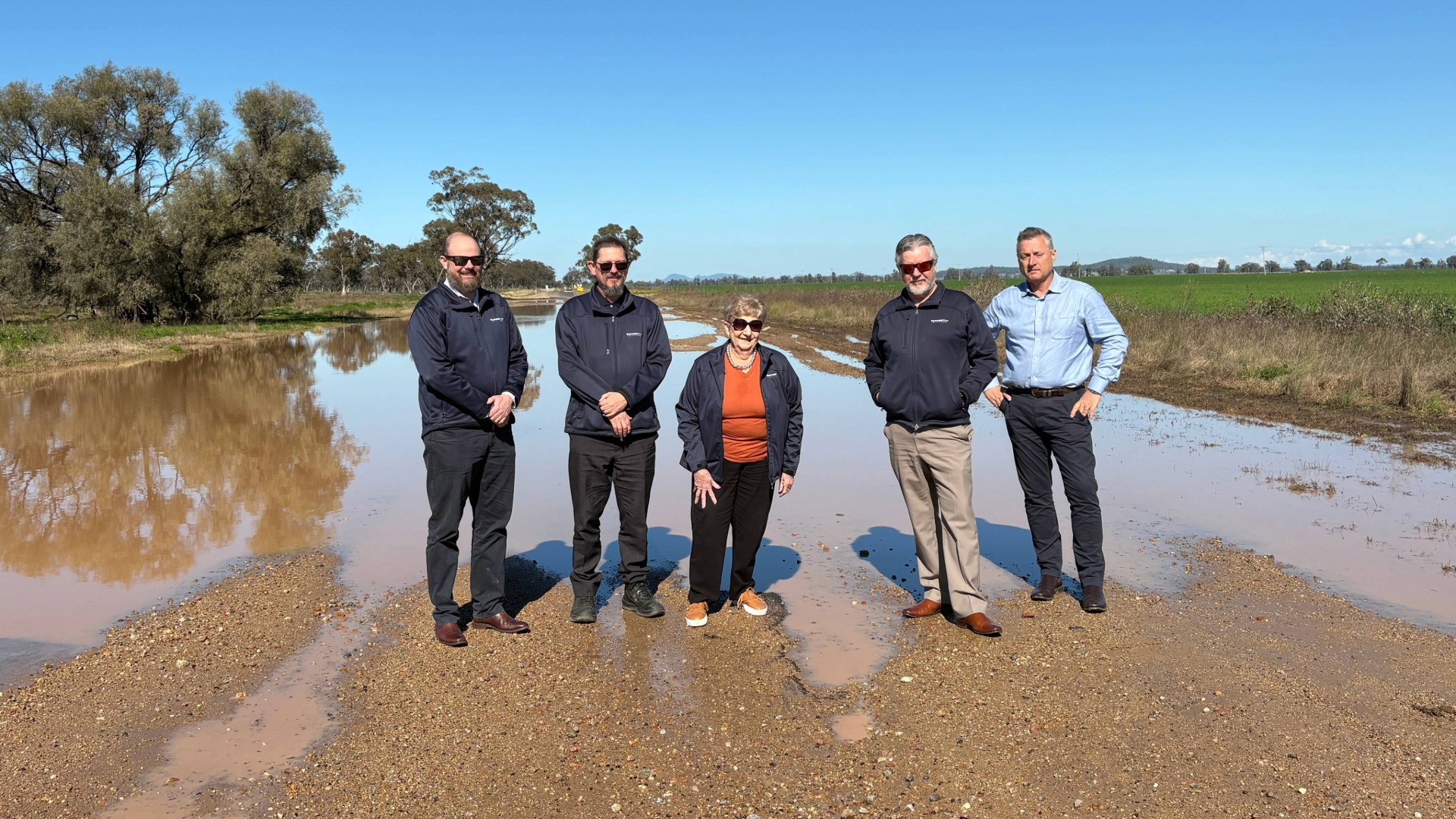
“We have had significant delays in being able to undertake repair works, receiving payment for the work that has been completed and in receiving reliable and consistent guidance on claims.
“We have had to look at engaging contractors to complete work after the NSW Government challenged Council’s estimates to do the work itself. All of this costs more money.”
Narrabri Shire Deputy Mayor Brett Dickinson agreed betterment must be prioritised and funded.
“Betterment is talked about at all levels of government, and with good reason; it is about making smart, lasting repairs that prevent the same flood damage from happening time and time again,” he said, pointing to Rangiari Road as an example of one of their roads that would benefit from this approach.
“Here at Narrabri Shire Council, we are strong believers in ‘building back better’, but that is only possible with timely and well-targeted support,” Cr Dickinson said.
Minister says maintenance is now the focus
The scale of the issue is not lost on the Minister, who – aside from a background in transport – not long ago took a ride with Minister for Barwon Roy Butler around some of our roads to see for herself.
In a speech to the InMotion Transport Industry Conference earlier this month, Minister Aitchison acknowledged that for too long mega-projects had come at the expense of everyday road maintenance.
“The truth is, when mega-projects swallow the budget, it leaves too little to maintain the roads people rely on every day,” Ms Aitchison said .
“And just as important as building new roads is maintaining and strengthening our existing network. Severe weather and natural disasters have caused billions in damage, particularly in regional NSW.”
She said the government had quintupled funding for council road repairs, from under $200 million to more than $1 billion, and created a new Road Maintenance and Resilience Division with a four-year integrated program of works.
“The reality is this: the choices we make now will decide whether NSW has a road network that is safe, reliable, and fair for decades to come.”
The NSW Government also last week introduced a new “always open” system for road categorisation, allowing councils to apply at any time for roads to be reclassified as state or regional.
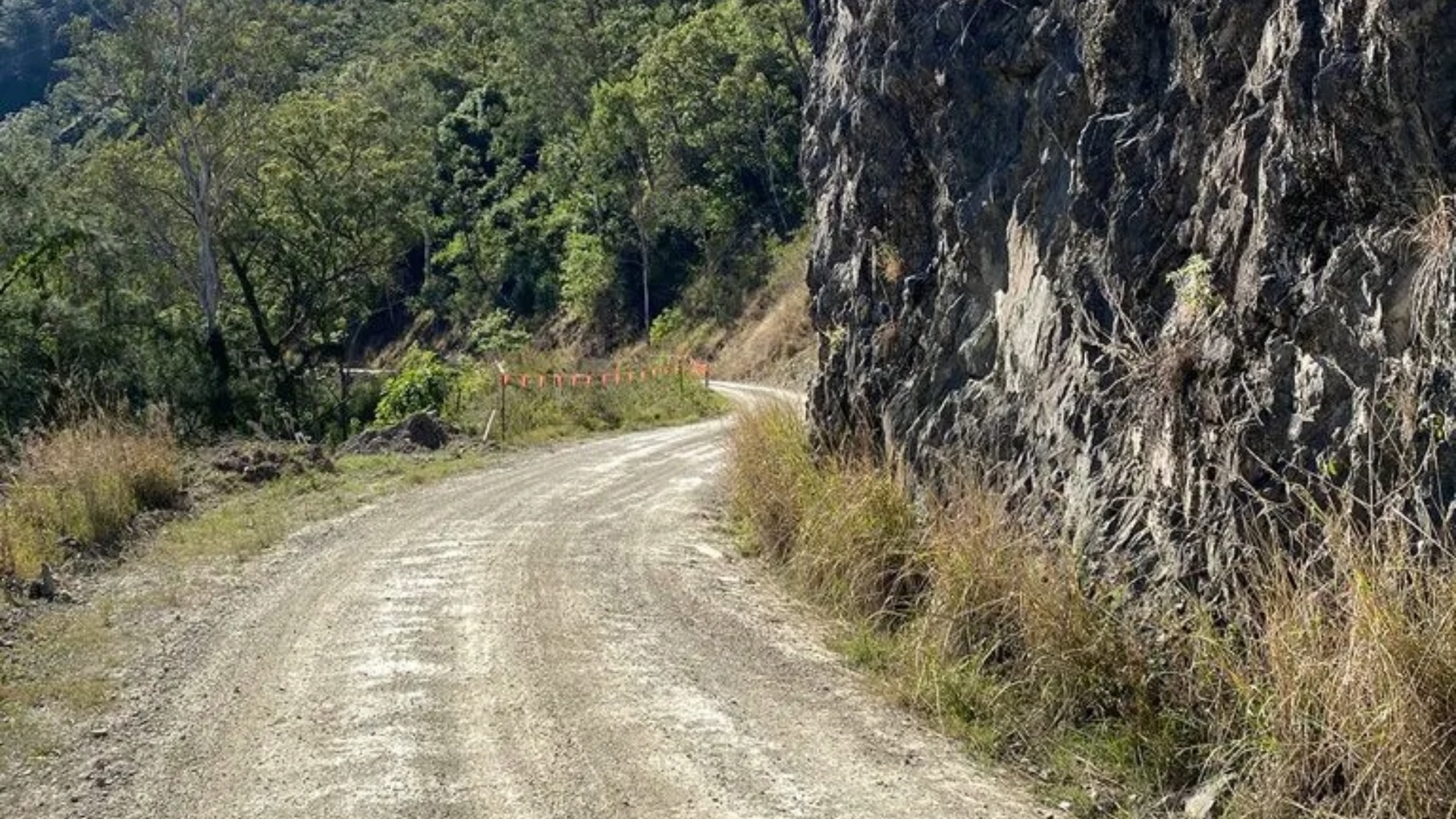
A prime candidate for reclassification that is also a strong example of what happens when regional roads are not maintained, is the Armidale Kempsey Road. reclassified from a regional road – and thus a State responsibility – to a local road managed jointly by Armidale and Kempsey Councils in 2009, the road descended into disrepair. Adam Marshall campaigned to have it reclassified as a regional road for some years, but it is still a local road.
It’s also completely closed at the moment between Big Hill and Blackbird Flat, except for essential travel by residents, emergency, and essential services. The road needs a significant amount of rebuilding and restoration after multiple landslips, resulting from bushfires and floods. Residents were cut off and isolated for months as a result of the landslides, but the road will not be built back better – despite the $406m price tag – only to its “pre-disaster standard”.
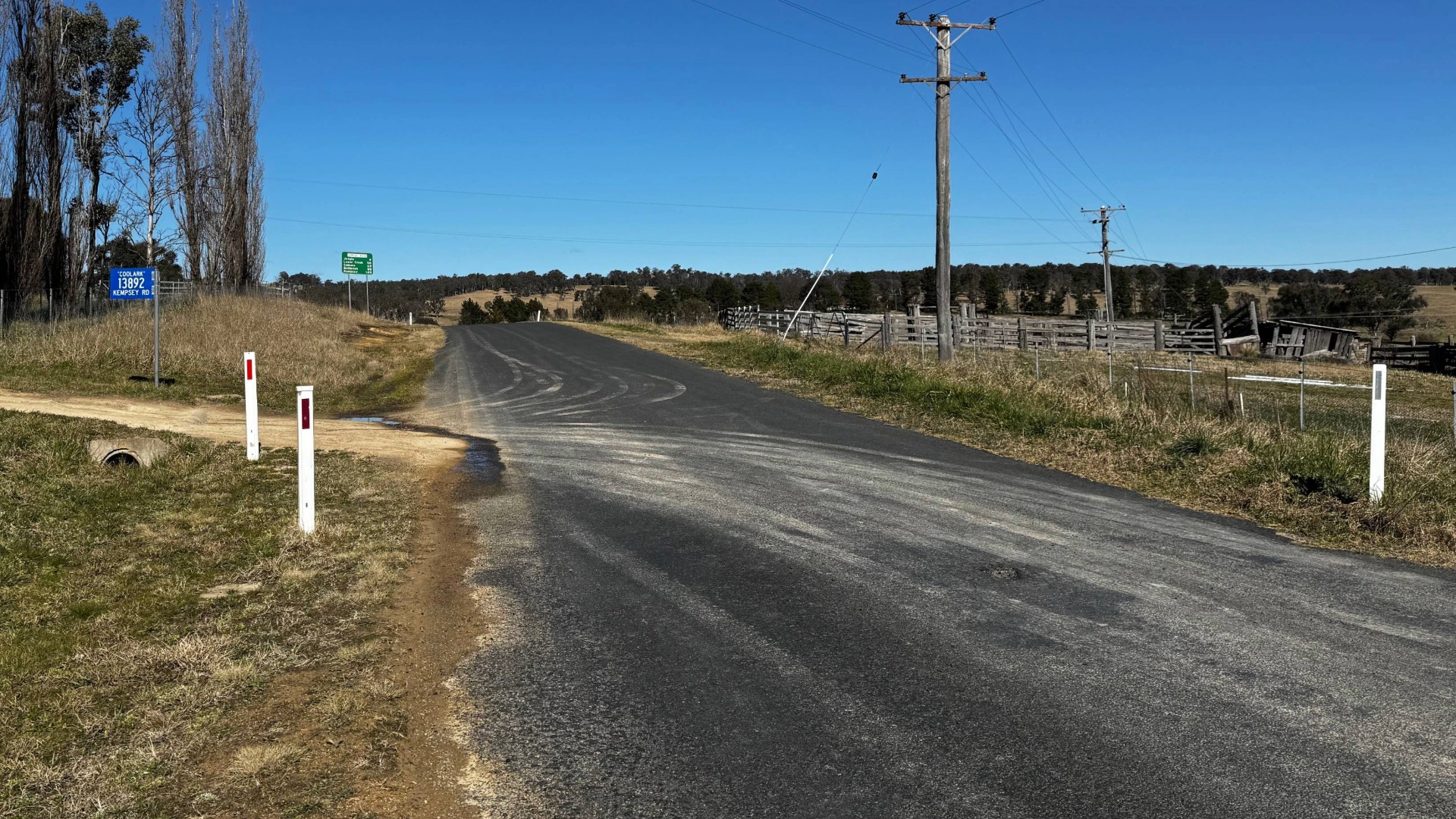
The major project began in 2022 with an estimated three years to complete, and then was expanded to an even larger project after more flooding damaged the road. The tender for the main restoration works is not expected to be announced until mid 2026 according to the latest project update, and the road will, according to Armidale Regional Council who is managing the project, be reclassified as a regional road once the repairs are complete.
Minister Aitchison said the reform around reclassification ended years of uncertainty.
“With increased populations in regional communities, increasing freight tasks on the regional network and changes to resilient routes to deal with climate change, we need a dynamic, transparent approach to applying for recategorisation that quickly becomes straightforward and business as usual,” she said.
“Roads are the lifeblood of our communities – connecting homes, schools, hospitals, farms, industry and small family businesses.”
“They need to be funded and maintained by the right authority so they’re safe and reliable,” Ms Aitchison said.
Pivoting to avoid history repeating
One silver lining of the repeated flooding and storm events affecting the New England in recent times is that it does provide an opportunity to break the cycle, and pivot to a ‘build back better’ approach for a climate change affected reality of more frequent and more severe weather events. The changing weather patterns, combined with energy transition and continued regional migration, are demanding a stronger regional road network, and vastly upgraded highways that can be a viable alternative to coastal routes.
Cr Mailler said the burden of repair is now beyond the capacity of councils, and it is affecting the productivity of our local industries.
“Moree is one of the most productive agricultural shires in the country. We have one of the largest road networks in the state. The burden of repairing and maintaining our roads is now beyond the now capacity and resources of the shire council system.
“Given what we know about climate change, these extreme weather events are going to keep on coming with increasing frequency.”
Mayor Davis also pointed to the productivity cost of poor roads, and the extra load generated by the energy transition.
“Our community relies heavily on road transport to move produce, livestock, and essential goods, with the New England and Gwydir Highways serving as critical lifelines.
“Investment in premium-quality upgrades and alternative routes is essential—not only to ensure safe and reliable passage in all weather but also to support the heavy freight demands of transporting wind turbines and solar panels from Newcastle as part of Glen Innes Severn’s vital energy transition.”
All councillors were of one mind in the need to change the way we are doing things and build better for the future.
“The damage we are experiencing is not business as usual and road funding for repairs and maintenance needs to be rethought urgently for regional shires by all levels of government,” Cr Mailler said.
“By investing in stronger, more resilient roads now, we can stop waste, save taxpayer dollars, and deliver a better future for our community,” Cr Dickinson said.
Got something you want to say about this story? Have your say on our opinion and comment hub, New England Times Engage

